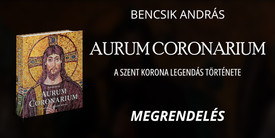“Descendants of the Huns are living in today's Sweden” – exclusive interview
They want to deny the genetic ancestry of some Swedes – says Swedish genetic genealogist Karl O. Högström. How and when did the Huns come to Scandinavia? What kind of hunnic haplotype groups do modern Swedes carry? Why is this subject a taboo for Swedish scientists, and is Odin – the arch-god of Norse mythology – really a Hun shaman? An exclusive interview for Magyar Demokrata.
Huns in Scandinavia. At first, the title of your book sounds astonishing. What is your basis for believing that some of the European Huns moved to what is now southern Sweden?
There are many reasons why I and other researchers over the years have argued that Hunnic contingents were present in Scandinavia in the 5th century CE. The first and most obvious reason is that various historical sources, both Hungarian and Germanic, claim this was the case. Another reason is that we now know with certainty, due to the carbon-14, isotopic and genomic analyses of the human remains from a burial in Czulice, southern Poland, that Hunnic contingents were present north of the Carpathians already during the first decade of the 5th century CE. The fact that a nearby somewhat contemporary burial from Jakuszowice contained artifacts in both the Hunnic polychrome style and the Sösdala style along with the fact that artifacts in the Sösdala style were deposited on ridges in southern Sweden according to Hunnic customs around the same time indicate that Hunnic contingents were present in southern Sweden at the beginning of the 5th century CE.
A third reason is that several Hunnic Y-DNA branches nowadays are present in southern Sweden.
What historical sources support your theory?
In my recently published article titled The Huns in Scandinavia: A new approach centered around modern DNA, I list some of these sources. In my upcoming book titled The Huns and their allies in Scandinavia, I list more sources, especially concerning Hunnic presence in Scandinavia. However, I do not make use of all the sources at hand. Instead, I focus on a few specific sources and tries to demonstrate that they corroborate each other. Priscus states that Attila’s empire in the late 440s CE encompassed the whole of Scythia and the islands of the ocean, the latter likely referring to Scandinavia that at the time was believed by the Romans to be a large island with other smaller islands surrounding it. Jordanes states that the Huns and their allies referred to Attila as the sole possessor of the Scythian and German realms. Roman sources states that the Huns were present in western Germany.
Atlakviða states that Hunnic contingents were present in Jutland. Widsið states that wars were fought between Huns and Goths in the forestland near the Lower Vistula, not far from the southern Baltic coast.
Didrikssagan mention several Hunnic contingents and armies being sent to Sweden. Local legends from southern Sweden state that the Huns were present in this part of Sweden.


What haplotype groups do the Swedes who carry these genes belong to?
A small minority of Swedes carry Y-chromosomal lineages that likely can be traced back to steppe nomadic groups. With the term steppe nomadic, I refer to horse-riding nomads with composite bows during the Iron Age, not the earlier Proto-Indo-European pastoralists. What sets the former apart from the latter is that the horse-riding nomads of the Iron Age carried both West and East Eurasian ancestry to various degrees and they mainly carried Y-DNA branches R-Z93 and Q1.
Several subbranches of R-Z93 and Q1 are present in southern Sweden.
One example is R-Y38432 which is closely related to a Hunnic individual from Budapest with R-FGC56425. The fact that the TMRCA of R-Y38432 is dated c. 426 CE along with the fact that it has never been detected in continental Europe suggests that it was brought to Sweden around that time. R-S10885 to which R-Y38432 belong has been detected among Huns in both eastern and western Kazakhstan as well as among Huns in Hungary. There is no doubt about R-S10885 is a Hunnic Y-DNA branch. It is likely that this Y-DNA branch, just like the other steppe nomadic Y-DNA branches nowadays present in Scandinavia, were brought north by heterogeneous Hunnic contingents. These Hunnic contingents should likely be equated with the cultural horizon known as the Sösdala style. The fact that bearers of the Sösdala style cremated their dead may help to explain why these steppe nomadic Y-DNA branches have never been detected among ancient DNA from Scandinavia.
What makes you think it is a “Hun” gene? Very few European Hun skeletons are known, and genetic testing has been carried out on very few ancient samples.
It is true that we have few Hunnic remains and that even fewer have been genomically tested. With that said, we have tested enough ancient remains at this point to be able to identify at least some Hunnic Y-DNA branches and trace their westward migration from the Altai to Europe. One example is R-S10885. Another example is Q-YP789. Both these branches were present among Hunnic groups in Berel, northeastern Kazakhstan, before they migrate to Europe. Another likely Hunnic branch is R-Y56311 that was detected in a Xiongnu high king from Arkhangai, Mongolia. R-Y56311 is nowadays only present in Poland and Sweden. R-S10885 is present in Hungary and Sweden. Q-YP789 is present in Hungary and Poland. The distribution pattern points to a northward migration of Hunnic contingents which ultimately reached southern Sweden.
You also mention the Seklers (székelyek) in your book. Do their genes suggest that some of them are related to the Huns?
Yes, some of the Székely people carry R-S10885 and Q-YP789.
Have you received any substantial reactions or criticisms from historians or other researchers?
I have received both criticism and praise from scholars. I received more criticism in the beginning, but as more evidence have come to light, that initial self-assertive criticism has waned. There are several prominent scholars that have praised my research. Some Scandinavian scholars have faced criticism for doing so and have therefore felt it necessary to distance themselves from me. I receive a lot of positive reactions from scholars outside of Scandinavia, especially from Hungarian scholars.
You mentioned that you belong to such a Hunnic haplogroup. Approximately how many people today might carry “Hun” genes?
I carry Y-DNA branch Q-L527. Its origin is in southern Siberia. We do not know yet when and how this branch arrived in Scandinavia. It is probably not a Hunnic but rather a Scythian branch. The closest related branch to Q-L527 has been detected among human remains from the Okunev culture in Siberia. Other closely related branches have been detected among various early steppe nomadic groups such as the Karasuk, the Srubnaya-Alakul, the Wusun and the Tagar cultures.
My view is that the proliferation of Q-L527 and R-Z93 in Scandinavia is linked to a Hunnic context even if some of these Y-DNA branches may not be Hunnic but rather derive from Hunnic allies. These supposed Hunnic Y-DNA branches make up less than 5% of the male Y-DNA lineages in southern Sweden.
I also carry a smaller amount of autosomal admixture from a Scytho-Siberian or Hunnic source, likely the former, and which I have inherited from my father who carry the same type of admixture but slightly more than I do. This eastern admixture that I carry has been detected among several individuals with Q1 in Scandinavia. This admixture is not evenly spread among Scandinavians, not even among individuals with Q1 and R-Z93, which indicates that these individuals or groups were integrated into the ethnic fabric of Scandinavia sporadically and fairly late.
Can regular DNA-tests provide such detailed information?
This admixture is identified by all commercial DNA-tests.
FamilyTreeDNA label this admixture as Native American and Magyar ancestry, but these labels are only proxies used by FamilyTreeDNA in this case to identify much older ancestral components.
When using other available tools to analyze this admixture, one part seems to be linked to the Andronovo horizon and another part seems to be linked indigenous Siberian groups. These groups intermixed in southern Siberia during the Bronze Age which formed the Karasuk culture. The Scytho-Siberians and the Sakas emerged from the Karasuk culture. The Xiongnu/Huns in turn emerged as a mixture of Scytho-Siberians/Sakas and groups from the Slab Grave culture in Mongolia, the latter mainly carrying East Eurasian ancestry.
Has your research become a topic in Sweden? We are well aware of the “Viking” roots of the Swedes, how do they relate to this Steppe heritage?
This topic is not debated openly in Sweden. Quite the opposite.
The Swedish mentality emphasizes conformity and opposing opinions are actively silenced. I call this the Vanir mentality.
This is also why some scholars in Scandinavia have chosen to distance themselves from me because if you are perceived as challenging existing paradigms there are consequences for doing so, especially in a country like Sweden. Some scholars also have incentives to illegitimize and/or silence the debate since they have built their reputations and careers on arguing the exact opposite.
The Swedes along with other Scandinavians carry high amounts of ancestry from Proto-Indo-European pastoralists who arrived in Scandinavia during the Neolithic. The Proto-Indo-European heritage have played a significant role in the shaping of their culture, beliefs and customs. However, I would argue that some of the beliefs and customs that are believed to derive from these Proto-Indo-European groups instead should be attributed to influences from the Huns and their allies.

How does this Hun connection relate to the Odin myths, as you write in your book?
Several researchers, me included, argues that the myths about Odin are at least in part mythologized versions of these events. In Atlakviða, Attila’s hall is referred to as valhǫll, the same word used for Odin’s hall in later sources. The earliest mention of valhǫll is actually found in Atlakviða. In this context, the word can be interpreted as meaning both the hall of the dead and the foreign hall. The golden bracteate IK 737 from Jutland, Denmark, dated to the 5th century CE, likely contains a reference to Attila which I talk about in my upcoming book. IK 737 and other similar bracteates also contain a depiction of a humanoid figure that is widely believed to be Odin.
In Gesta Danorum, Odin is explicitly referred to as a Hunnic prophet/shaman. There is no logical explanation to why the author Saxo Grammaticus would associate Odin with the Huns unless there were earlier accounts from southern Scandinavia who also did this.
In Ynglinga saga, it is narrated how Odin migrates from Tyrkland, i.e. the land of the Turks, to Sweden where he resettles with his people. Tyrkland is described in Ynglinga saga as being located east of the Don. There was barely any Turkic presence in this region before the arrival of the Huns in the 4th century CE which means the Odinic migration can be dated to the 4th-5th centuries CE.

